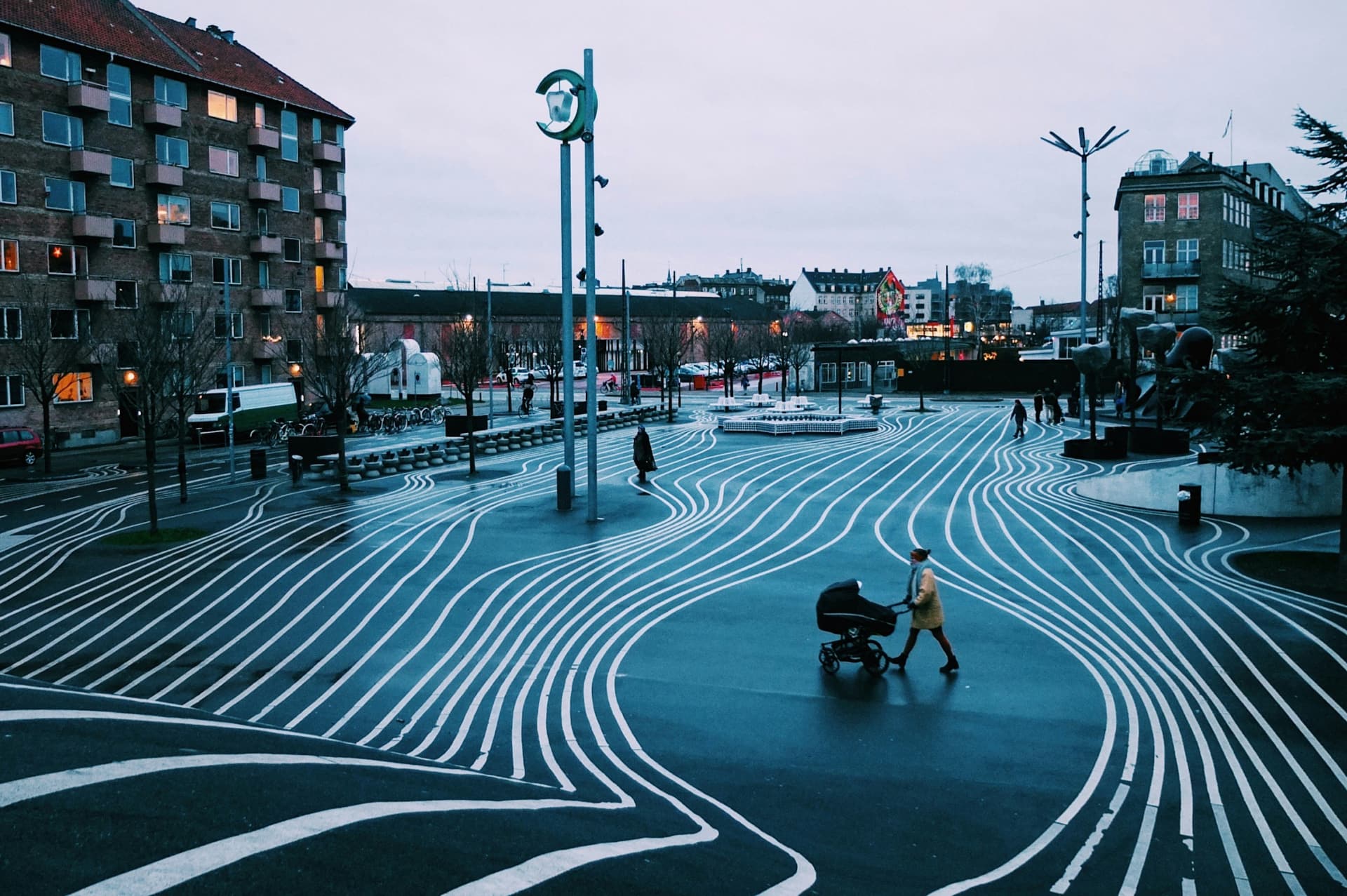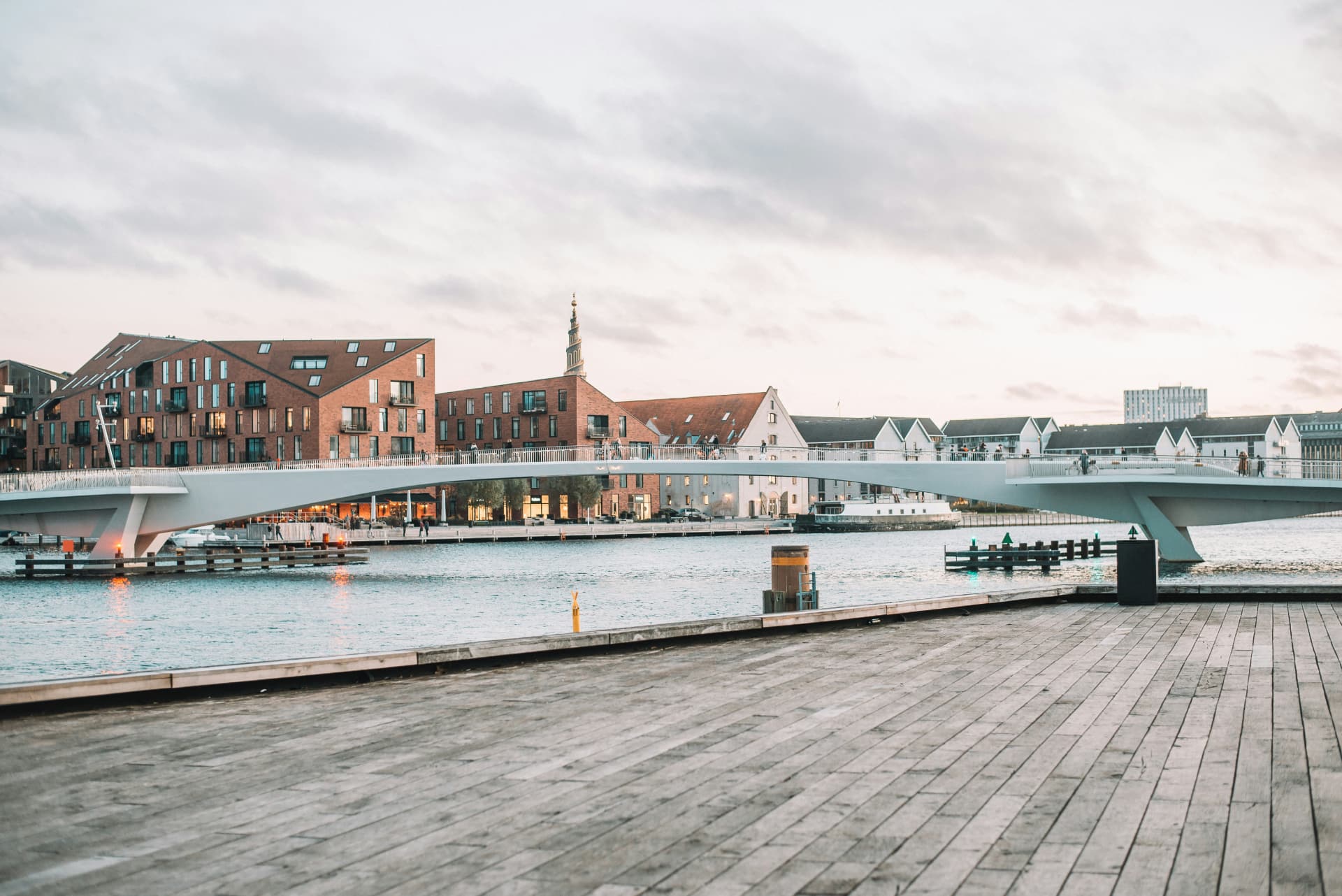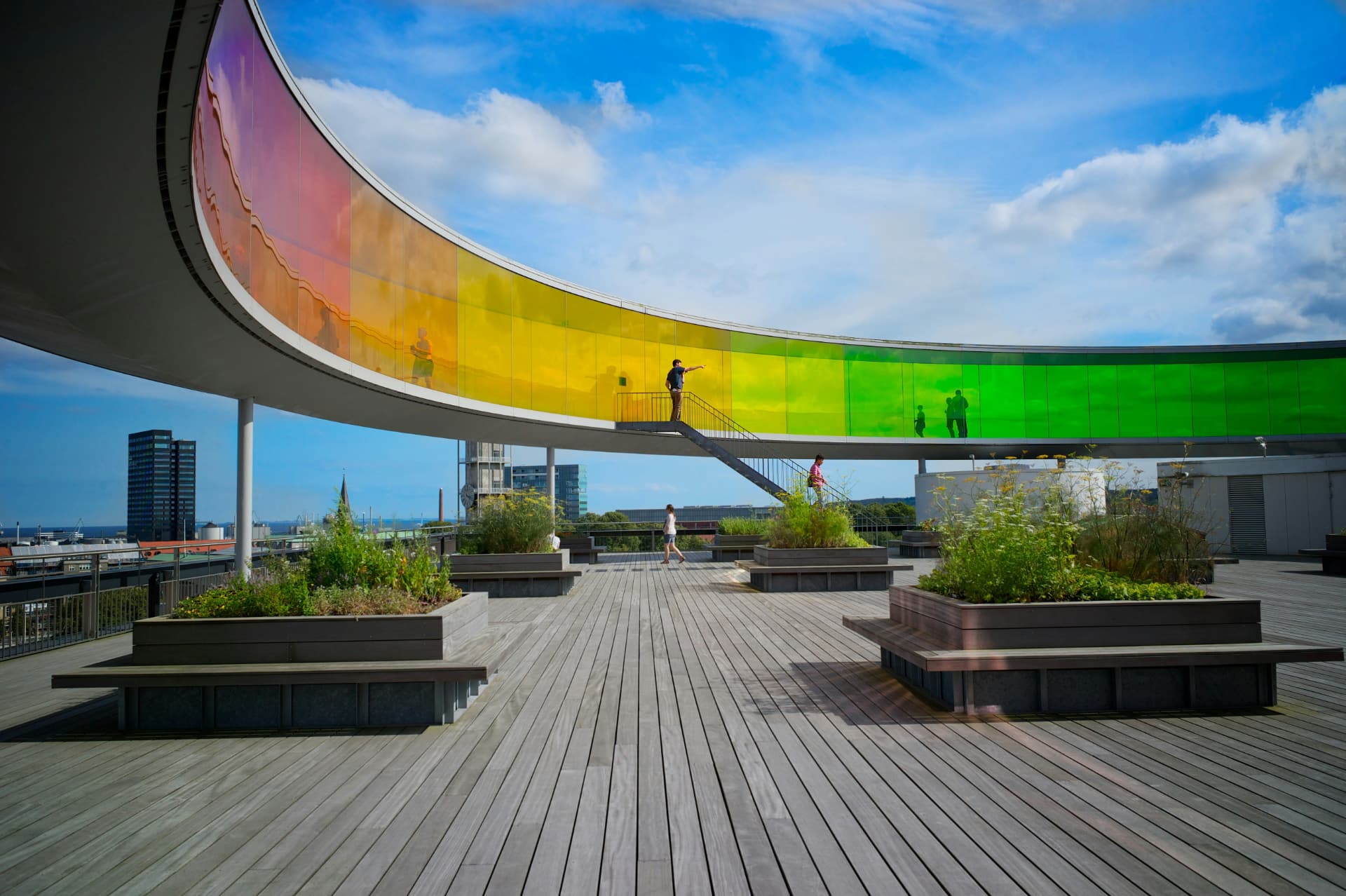Denmark is renowned not only for its picturesque landscapes and historical depth but also for its profound influence on global design. The Danish approach to design, characterized by functionality, simplicity, and elegance, has made significant contributions to architecture and household aesthetics worldwide. This distinct style, known as Danish Modern, is celebrated for its innovative use of materials, minimalist aesthetic, and human-centric approach, which have cemented Denmark’s status as a leader in the design world.
In this exploration of Danish design, we will delve into the philosophy that has shaped this unique style, highlight iconic Danish products that have garnered international fame, and take a virtual tour of the architectural wonders that dot the Danish landscape. From the timeless creations of Arne Jacobsen to the pioneering buildings designed by Jørn Utzon, Danish design offers a masterclass in blending functionality with beauty.
Join us as we uncover the stories behind Denmark’s most famous designs and buildings, offering insights into how this small nation continues to influence global aesthetics and set standards in design excellence. Whether you’re a design enthusiast, an architect, or simply someone who appreciates the seamless blend of art and functionality, the world of Danish design has something to captivate your imagination.

Understanding Danish Design
The Core Principles of Danish Design
Danish design is not merely a style but a philosophy rooted in practicality, simplicity, and elegance. At the heart of this design ethos are three core principles: functionality, minimalism, and sustainability. Each element is considered essential not just for aesthetic appeal but for enhancing everyday life. Danish designers and architects believe that good design is not only visually appealing but also highly practical and accessible to all.
Historical Context and Modernism
The modern Danish design movement began to take shape in the early 20th century but truly flourished in the post-World War II era. This period saw Denmark embracing modernism, with designers focusing on creating products that were not only beautiful but also affordable and functional for the masses. This democratization of design was a response to the social changes of the time, emphasizing quality and accessibility in everyday items.
Influential Figures in Danish Design
Two figures stand out for their monumental contributions to Danish design: Arne Jacobsen and Hans Wegner. Arne Jacobsen, an architect and designer, is renowned for creating iconic furniture pieces such as the Egg Chair and the Swan Chair. His designs are celebrated for their organic forms and functional beauty, seamlessly integrating into various spaces without sacrificing comfort or style.
Hans Wegner, another pivotal figure, contributed to the global popularity of Danish design with his clean, simple lines and functional approach. His most famous creation, the Wishbone Chair, remains a staple in contemporary interiors around the world, epitomizing the timeless quality of Danish design.
These designers did not work in isolation but were part of a broader movement that included numerous other talented individuals. Together, they forged a legacy that continues to influence the design world, ensuring that Danish design remains synonymous with excellence and innovation.

Icons of Danish Design
Danish design is celebrated for its iconic furniture and household items that have transcended their functional purposes to become symbols of style and simplicity. Here, we explore some of the most celebrated pieces and the stories behind their creation.
The Egg Chair by Arne Jacobsen
The Egg Chair, designed by Arne Jacobsen in 1958 for the lobby and reception areas of the Royal Hotel in Copenhagen, is a quintessential example of Danish design. With its unique shape and sculptural silhouette, the Egg Chair not only offers privacy and comfort but also showcases Jacobsen’s pioneering techniques in using molded foam. This chair remains a staple in modern interiors, exemplifying how aesthetics and function can coexist seamlessly.
The PH Lamp by Poul Henningsen
Another hallmark of Danish design is the PH Lamp, created by Poul Henningsen. Designed to provide glare-free light, the lamp features a multi-shade system that directs the light both horizontally and vertically, creating soft, diffused lighting. Henningsen’s focus on the quality of light rather than just the fixture itself revolutionized lighting design and remains influential to this day.
The Wishbone Chair by Hans Wegner
The Wishbone Chair, crafted by Hans Wegner in 1949, is celebrated for its clean lines and the distinctive Y-shaped backrest. Wegner’s design philosophy was to create furniture that was beautiful from any angle, combining form with function in a way that was innovative yet timeless. The Wishbone Chair is a staple in dining rooms around the world, appreciated for its simplicity and comfort.
Royal Copenhagen Porcelain
Beyond furniture, Danish design also extends to porcelain, with Royal Copenhagen being one of the most prestigious manufacturers. Founded in 1775, Royal Copenhagen is renowned for its high-quality porcelain products, including the classic Blue Fluted pattern, which is recognized worldwide for its intricate and graceful decoration.
Preservation and Innovation
These designs are not merely artifacts of the past; they continue to inspire and evolve. Companies like Fritz Hansen, Carl Hansen & Son, and Louis Poulsen keep these classic designs in production, ensuring that they remain part of contemporary homes and public spaces. Moreover, new designers draw inspiration from these icons, creating innovative products that respect the principles of Danish design while pushing creative boundaries.

Exploring Danish Architecture
Danish architecture, like its design philosophy, emphasizes functionality, sustainability, and aesthetics. The country is home to architectural wonders that span from historic buildings to contemporary marvels, each telling a story of Denmark’s cultural and technological progression.
Historical Landmarks
Denmark’s architectural heritage is rich and varied. The Amalienborg Palace, the home of the Danish royal family, showcases classical European architecture arranged around an octagonal courtyard, demonstrating the elegance of 18th-century design. Similarly, Rosenborg Castle, with its Renaissance architecture, reflects the historical opulence and craftsmanship of Denmark.
Modern Architectural Innovations
Modern Danish architecture pushes the envelope in sustainability and innovative design. The Black Diamond, an extension of the Royal Danish Library in Copenhagen, is a striking example of modern architecture. Its sleek, black granite façade and angular lines mirror the waterfront, blending the building with its natural surroundings while creating a visually striking landmark.
The Copenhagen Opera House, another contemporary icon, sits directly across from the Amalienborg Palace and is considered one of the most modern and expensive opera houses ever constructed. Designed by Henning Larsen, it is a beacon of contemporary design and cultural sophistication.
Sustainable and Green Architecture
Denmark is a leader in sustainable architecture, focusing on energy efficiency and environmentally friendly building practices. The Mountain Dwellings in Copenhagen, designed by BIG (Bjarke Ingels Group), exemplify this trend. The building combines residential and parking spaces in a terraced, mountain-like structure that incorporates green roofs and optimal solar conditions, pushing the boundaries of traditional urban architecture.
Jørn Utzon’s Masterpieces
No discussion of Danish architecture would be complete without mentioning Jørn Utzon, the architect behind the Sydney Opera House. Utzon’s designs are celebrated for their organic forms and harmony with their surroundings. In Denmark, his work includes Bagsværd Church, renowned for its curvilinear concrete forms that create a stunning play of light within its interiors, mirroring the softness of clouds and creating a tranquil spiritual environment.

Tours and Architectural Trails
For architecture enthusiasts visiting Denmark, architectural tours and trails offer insights into both historic and modern Danish architecture. These tours provide a deeper understanding of the architectural principles that guide Danish design and the stories behind some of the country’s most famous buildings.
A Tour of Denmark’s Design Museums
Denmark’s commitment to design excellence is not only evident in its products and architecture but also beautifully displayed in its museums. These institutions not only preserve the legacy of Danish design but also educate and inspire future generations.
Designmuseum Danmark in Copenhagen
The Designmuseum Danmark is one of the premier institutions for those interested in understanding Danish design. Located in Copenhagen, it houses an extensive collection that spans from the Industrial Age to the present, highlighting everything from furniture and decorative arts to fashion and graphic design. Key exhibits include works by Arne Jacobsen, Poul Henningsen, and Hans Wegner, providing a comprehensive overview of Danish design history.
Exhibitions and Educational Programs: The museum regularly updates its exhibitions, offering new perspectives on both Danish and international design trends. Educational programs and guided tours are available, offering deeper insights into the exhibits and the evolution of design principles.
The Danish Architecture Center (DAC)
Situated in the striking BLOX building along the Copenhagen waterfront, the Danish Architecture Center (DAC) offers exhibitions, events, and a variety of activities related to architecture and design. The DAC serves as a hub for anyone interested in the built environment, promoting dialogue about urban development, architectural innovation, and sustainability.
Interactive Exhibits and Workshops: DAC is particularly renowned for its interactive exhibits and workshops that engage visitors of all ages, making architecture accessible and compelling. It’s a place where children can learn about urban planning and design through play, and adults can participate in discussions about the future of cities.
Louisiana Museum of Modern Art
While primarily an art museum, the Louisiana Museum of Modern Art north of Copenhagen also features significant architectural and design elements. Its location and design integrate landscapes and art in unique ways, providing a holistic experience that blends natural beauty with artistic expressions.
Sculpture Park and Architectural Tours: Louisiana’s Sculpture Park and its beautifully designed gardens offer a serene setting to enjoy works by renowned sculptors. The museum itself is celebrated for its modernist architecture and panoramic views of the Øresund Strait, making it a favorite for architectural enthusiasts.
Visiting Information
When planning visits to these design museums, it’s useful to check their websites for the latest exhibition schedules, ticket prices, and opening hours. Many museums offer discounts or free entry on certain days or times, making them accessible to a wider audience.

Danish Design in Everyday Life
Danish design’s influence permeates every aspect of life in Denmark, from public spaces and housing to the objects used daily by Danes. This section explores how the principles of functionality, sustainability, and minimalism are not just idealistic concepts but practical implementations that enhance daily living.
Design in Public Spaces
In Denmark, public spaces are meticulously designed with both aesthetics and function in mind. Copenhagen’s urban bike paths, for example, are a testament to design thinking that prioritizes safety, accessibility, and environmental sustainability. Similarly, public buildings like schools and libraries are examples of how architectural design can create environments that are both beautiful and beneficial to the community.
Public Art and Design Installations: Across cities and towns, public art and design installations add cultural value while being integrally useful. From sculptural benches in parks to creatively designed bus stops, these elements serve their primary functions while also beautifying the urban landscape.
Danish Home Interiors
The Danish concept of hygge, which roughly translates to a sense of comfort and coziness, is deeply influenced by design choices. Danish homes typically feature clean lines, natural materials, and a muted color palette, creating calming and pleasant living spaces. Iconic Danish furniture, which combines form and function, is a staple in Danish homes, reflecting the national aesthetic.
Sustainable Household Products: Sustainability is another crucial aspect of Danish design, evident in the choice of materials and products used in homes. From eco-friendly appliances to sustainably sourced furniture, the integration of green products is a priority, reflecting a national commitment to environmental conservation.
Design in Retail and Hospitality
Even in retail and hospitality, Danish design principles are evident. Concept stores in Copenhagen, like Illums Bolighus and Hay House, not only sell products but also showcase them in thoughtfully designed spaces that reflect Danish aesthetics. Restaurants and cafes often feature interiors that are minimal yet warm, focusing on quality materials and craftsmanship, enhancing the dining experience.
Packaging and Branding: Danish companies also reflect national design ethos in their packaging and branding, which tend to be minimalistic, functional, and elegant. This approach is not only visually appealing but also aligns with the environmental ethos of reducing waste.

The Global Influence of Danish Design
Danish design has made a significant impact globally. From the ubiquity of Danish furniture in international markets to the adoption of Danish urban planning principles in cities worldwide, Denmark’s design philosophy has transcended its national borders, influencing aesthetics and functionality in numerous contexts.
Celebrating the Legacy of Danish Design
As we conclude our exploration of Danish design, it’s clear that Denmark’s commitment to aesthetics, functionality, and sustainability is not just a national pride but a global influence. The principles of Danish design extend far beyond the borders of this small Scandinavian country, impacting how products are made, spaces are designed, and even how cities are planned around the world.
Danish design offers more than just visual pleasure and practical use; it provides a philosophy for living well. The integration of design into every aspect of life, from public transportation to home decor, illustrates a holistic approach that values quality, efficiency, and environmental care. This design ethos makes Denmark not only a leader in design innovation but also a model for sustainable living.
Visitors to Denmark are treated to an immersive experience in Danish culture through its design. Whether it’s walking through a beautifully curated museum, dining in a minimally elegant restaurant, or simply enjoying the functionality and simplicity of a Danish home product, the influence of Danish design is palpable. For those looking to understand how design can improve quality of life and sustainability, Denmark is a living showcase of these principles in action.
We hope this exploration inspires you to see not just the beauty of Danish design but its significance in crafting a better, more thoughtful world. Whether you are a design enthusiast, a professional in the field, or simply someone appreciative of well-considered aesthetics, Danish design has something to offer. It invites us all to think differently about our surroundings and to seek beauty and function in harmony.
As Denmark continues to innovate and lead in design, the world watches and often follows. The legacy of Danish design is a testament to the power of good design and its capacity to make the world not only a more beautiful place but a better one.





0 Comments